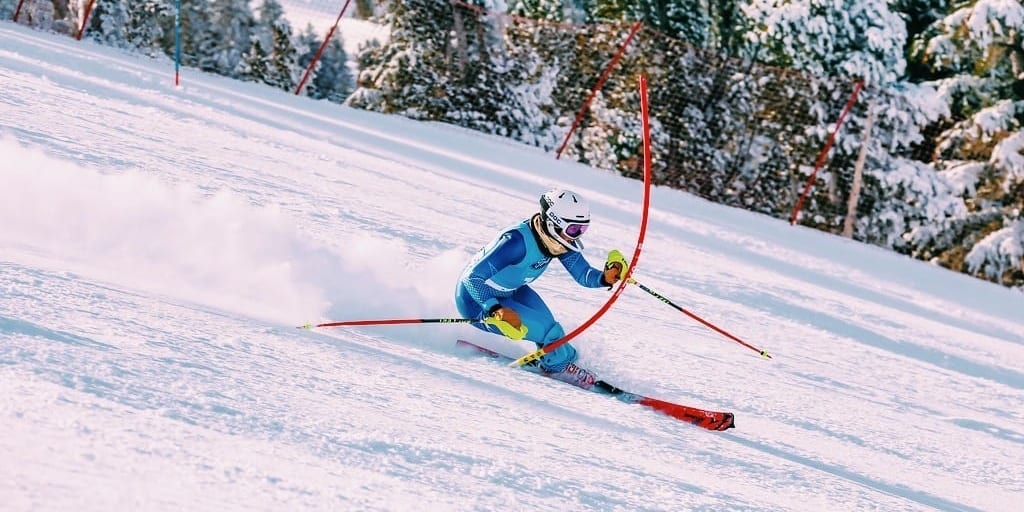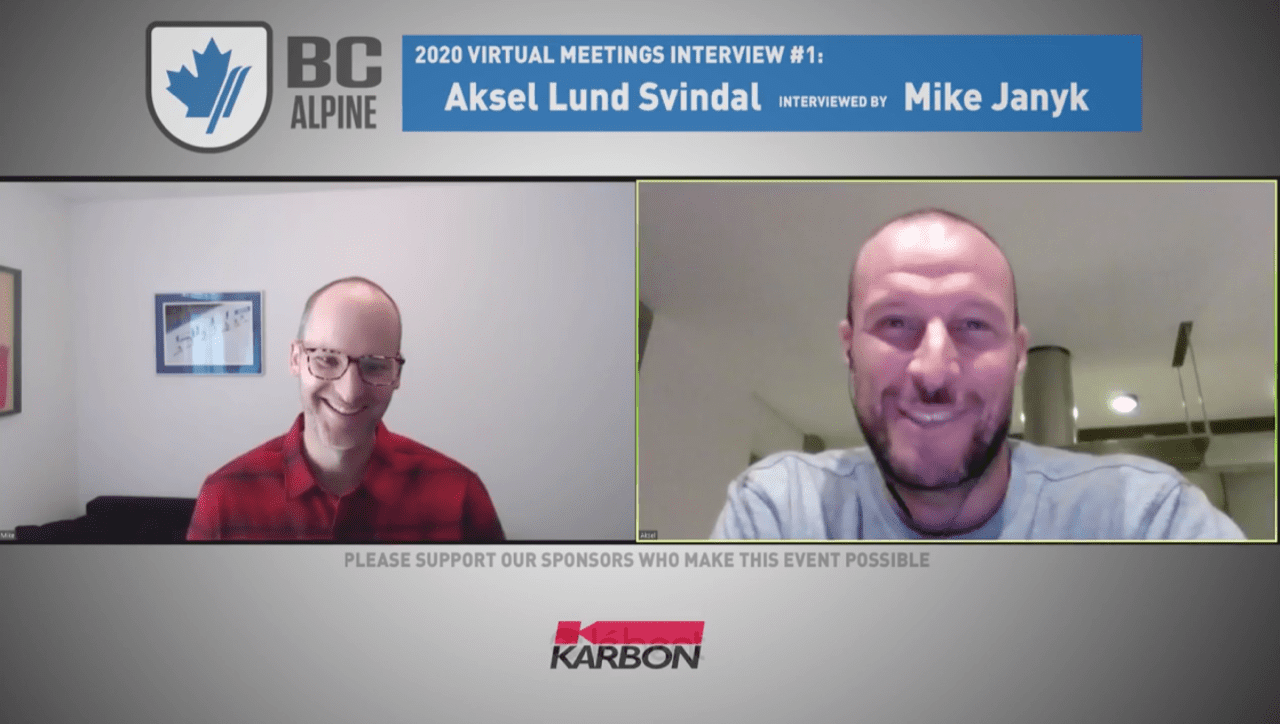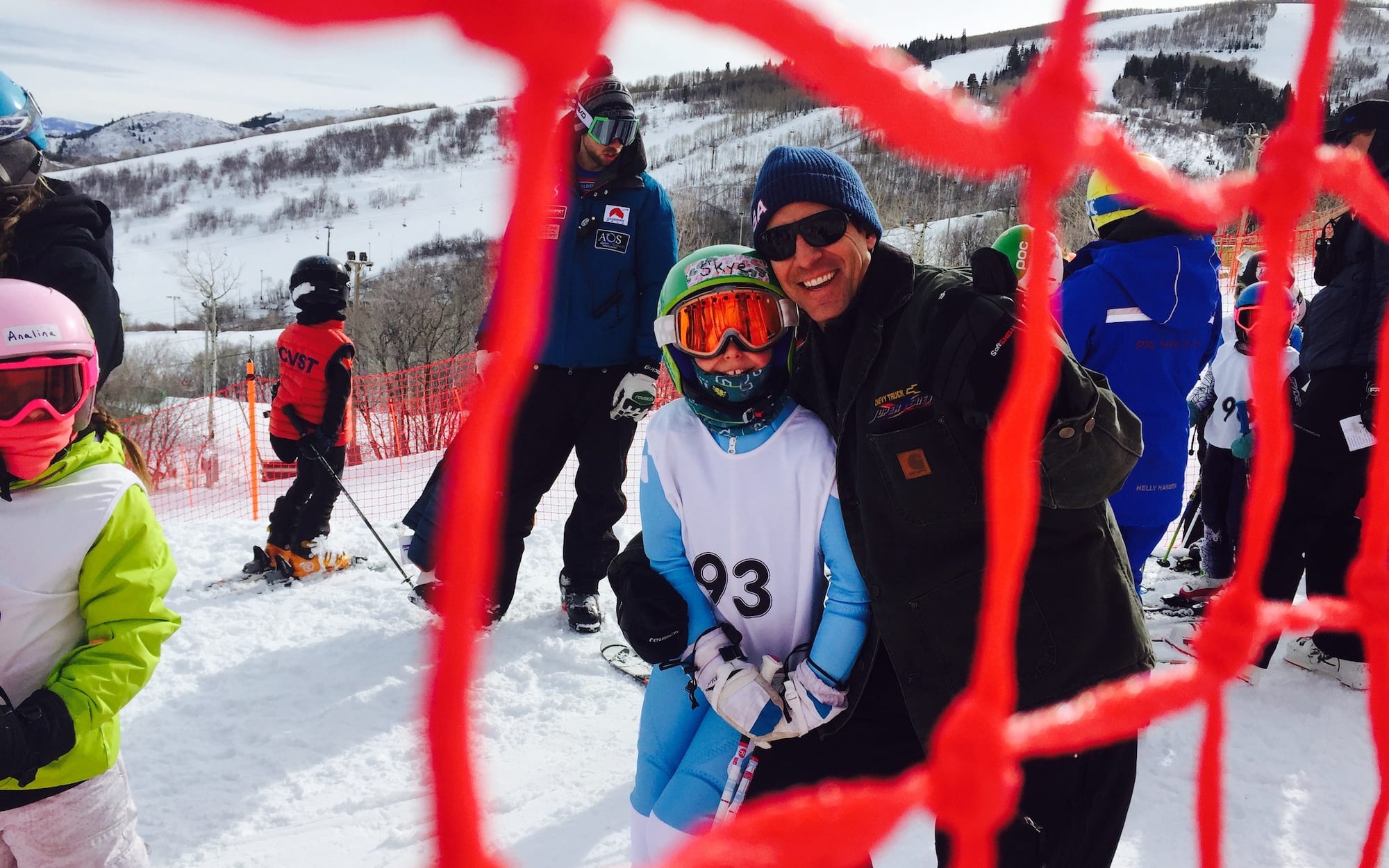Talking Shop With Sasha Rearick
If there is such a thing as an “offseason” for a World Cup coach, the very brief period of time between the conclusion of spring camps and the beginning of on-snow training in the summer would have to be it. Even if ski boots have been traded in for office shoes, it’s a safe bet that the mind of a coach hasn’t wandered far from the next camp, the next day, or the next training run on skis.
U.S. Ski Team Men’s Head Coach Sasha Rearick is no exception. Even though he has been enjoying some well earned down time since the men’s team returned from spring camps in Scandinavia, Rearick has kept himself busy with all manner of things, from formulating on-snow plans for later in the summer to preparing to welcome a baby later this month.
“We had all the groups – World Cup speed, World Cup tech, and Europa Cup – all in Scandinavia to do our spring camp,” he says. “We’ve had this theme the last couple of years to try and get some extra skiing while the athletes are still fit from the winter so they can still get that extra volume at race intensity.”
For the past two seasons, the U.S. men have capitalized on a partnership with the Norwegian men’s team where athletes share coaching resources on race days and both nations exchange training opportunities in North America and abroad. After the conclusion of U.S. Alpine Championships in late March, the men made the trek back to Europe to train at the 2019 World Championship venue in Are, Sweden, and then alongside the Attacking Vikings in Norway.
Spring is the ideal time of year to begin testing equipment for the next season because athletes are still in racing shape and are able to run courses on winter snow and at race-like speeds. This is critical in order to get the most feedback possible for the athletes, ski manufacturers, and servicemen to determine what ideal setups will look like going forward.

David Chodounsky and the rest of the U.S. men put in some serious miles in Scandinavia this spring. Image Credit: GEPA
“We were a little bit unfortunate with weather this year,” Rearick explains. “We lost a lot of energy trying to ski in not great weather conditions. When it would finally get good, we’d get a couple of days but the guys had used up a lot of energy on the moderate days.”
Rearick says that although the weather seemed to be stuck somewhere between winter and spring for the majority of the camps, the team was still able to make some valuable progress in skill development. After focusing on fundamental details in their technique and spending time on telemark skis to work on hip positioning, Rearick was encouraged by the intensity seen on the good weather days.
A notable change for the men’s speed squad is the return of longtime coach Johno McBride, who spent several seasons away from the World Cup tour while coaching at the Aspen Valley Ski Club. McBride joined the American Downhiller crew for their training time on the 2019 World Championship track in Are and his impact was felt immediately by the athletes and staff.
“It was fantastic to have Johno back with us,” says Rearick, “Immediately, all systems go, firing really well. He’s been working great building the team together; he’s a magician with team dynamics and that immediately took fire in a really positive way in Are.”
 Given that the Western United States had such a healthy winter this past season, Rearick says there was lots of discussion about scrapping the Scandinavian trip all together and relocating to a venue in the U.S. Ultimately, there were several deciding factors that led Rearick to the decision to return to Scandinavia.
Given that the Western United States had such a healthy winter this past season, Rearick says there was lots of discussion about scrapping the Scandinavian trip all together and relocating to a venue in the U.S. Ultimately, there were several deciding factors that led Rearick to the decision to return to Scandinavia.
“It was probably one of those decisions where in many ways we could have stayed here (in the U.S.) and probably have had some fantastic camps here,” he says. “We had a two-year plan in place to go to Norway and we had such a great camp there last year; there was just this energy, it was something new and exciting for the guys to be skiing there in the spring time.”
“It’s effective to go to Norway because we have all of our service personnel over (in Europe) already, our equipment is over there,” Rearick continues. “So, from a logistics point of view, believe it or not, it’s actually a more financially viable option to go to Norway – especially for the World Cup team – compared to staying in California, for example.”
Looking ahead to next season, there were a few notable names absent from the national team nominations published in May. Undoubtedly, the omission of American skiing legend Bode Miller raised more than a few eyebrows, especially given the fact that there has been no formal announcement from Miller about the status of his career.
This past year, after an unsuccessful attempt to compete on the World Cup on Bomber skis, Miller worked as an analyst for NBC’s coverage of the 2017 World Championships and a few select World Cup races throughout the season, in addition to other assorted business ventures. According to Rearick, Miller and the team have come to an agreement that makes it look like the 39-year-old Miller will be riding off into the sunset sooner rather than later.
“Bode’s been an unbelievable inspiration to not only the U.S. Ski Team and the U.S. ski family, but also the world of skiing,” says Rearick. “It’s been an amazing run, and I’m so fortunate to have been part of it. Bode and I have kept dreaming that we wanted to keep this going, but the reality is that the amount of effort that’s required to keep it going and sustain it at the level he’s been at is just not there. Bode’s got other aspirations in life and commitments in life, and we both agreed that we should be proud of the run we’ve done and not continue to try and do it at this time. I wouldn’t say Bode has closed the door totally, but at least in pushing each other to make the impossible happen, we’re not going to push that way anymore.”
Joining Miller in the dugout without a nomination for the 2017-2018 season is Tim Jitloff. After struggling through injuries and equipment switches over the past few seasons that saw him slip outside of the top-30 giant slalom skiers in the world, Jitloff will spend the Olympic season independent of the national team. However, Rearick stresses that the American will receive full support from the national team at any World Cup events he chooses to compete in and still has a chance to rejoin the program in the future.
“Jitloff is going to continue ski racing,” Rearick says. “He’s got talent to make fast turns and has been doing things different than the team for a number of years by living full time in Europe. When we looked at the guys we’ve got and the resources we’ve got, I had to make some tough calls and I had to put resources towards guys we are looking at for the future. … It’s time for him to find a different way, find a way that’s really going to work for him, and I didn’t think that we could offer that at this time.”
Two other notable athletes will be joining Miller and Jitloff on the growing list of American independent World Cup athletes. Aspen native and American Downhiller Wiley Maple and Minnesota tech specialist Michael Ankeny did not get the nod from Rearick and his staff for this coming season, although they will both receive support from the national team during and leading up to World Cup races.
Maple is another talent that has been plagued with injury throughout his career. Just when he seems to get some momentum going on the World Cup, it’s been back to the operating room to go under the knife yet again. Maple spent last season on the mend, nursing his fourth knee surgery in the last four years.
“Wiley Maple is coming back from a series of injuries and when you look at the amount of volume that he’s been able to train in-between those injuries, he’s got a long road ahead of him,” Rearick explains. “He’s motivated and he’s working hard in the gym every day trying to get himself ready to go. … He’s an old-school downhiller and he’s not afraid and he can pop in there but he’s got a hard, tough road ahead of him based on the injuries and lack of skiing over the course of numerous years.”
Ankeny, on the other hand, has managed to stay relatively injury-free throughout his career. Despite scoring World Cup slalom points in Adelboden for the second year in a row and qualifying for his first World Championships team in St. Moritz, he did not qualify for the team through objective criteria at season’s end.
“Michael is so talented,” says Rearick. “He’s physically talented, he’s a good skier, but he just can’t quite break that threshold that we need to see out of him. He’s been on the team and off the team, and when he’s been off the team, he’s put himself in a good place to own the program and he’s done well in that situation. I hope that all these guys can take ownership of their programs and do it the way they need to do it for themselves.”
Rearick is encouraged by the enthusiasm he has seen so far this spring and summer from his athletes, and looks forward to the return of stars Ted Ligety and Steven Nyman from injury. According to Rearick, both Ligety and Nyman are ahead of schedule and aim to be back on the World Cup come winter. Also of note is the expected return of Nolan Kasper, who has sat the last two seasons out due to injury and recently completed his undergraduate degree at Dartmouth College.
The U.S. men will spend the remainder of June in the gym before getting back on snow when the Europa Cup team heads to Europe in July followed by the traditional Southern Hemisphere projects in New Zealand and Chile in August and September.






















